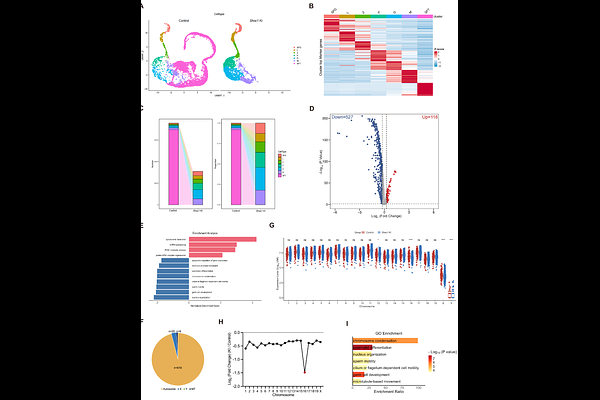The XPF-like domain in SHOC1 required for homologous recombination and safeguarding autosome from meiotic silencing of unsynapsed chromatin

The XPF-like domain in SHOC1 required for homologous recombination and safeguarding autosome from meiotic silencing of unsynapsed chromatin
Zhang, Y.; Sun, Q.; Ji, Z.; Mo, R.; Zhou, Y.; Zhao, J.; Xu, S.; Li, N.; Sun, Y.; Bai, H.; Zhi, E.; Han, S.; Chen, H.; Zhang, J.; Qian, D.; Bu, X.; Huang, Y.; Tian, R.; Guo, Y.; Lv, J.; Zhao, L.; Yang, C.; Zhao, F.; Li, P.; Zhou, Z.; Li, Z.; Yao, C.
AbstractDuring meiosis, a group of evolutionarily conserved ZMM proteins plays essential roles in stabilizing the recombination intermediates and promoting crossover (CO) formation. In mice, SHOC1 forms a trimeric complex with the other two ZMM proteins, SPO16 and TEX11, to bind recombination intermediates after strand invasion. Although genetic variants of SHOC1 are clinically associated with meiotic arrest and male infertility, their precise molecular mechanisms and evolutionarily conserved functions in human gametogenesis remain enigmatic. Here, we delineated species-specific divergences between human and mouse SHOC1 complex, and identified a missense variant within the XPF-like domain in SHOC1 (c.A1769G:p.Q590R) that was associated with meiotic arrest and non-obstructive azoospermia (NOA). The disorder of the XPF-like domain in SHOC1 impaired DNA double-strand breaks repair by compromising its ability to bind branched DNA structures and the recruitment of M1AP, REDIC1, and ZMM factors to recombination intermediates, ultimately abolishing CO formation. Furthermore, the variant disrupted dynamic 3D chromatin structure in pachytene spermatocytes and induced defects in homologous chromosome synapsis. More importantly, the XPF-like domain in SHOC1 was revealed to prevent autosome intrusion into the sex body compartment, thereby safeguarding critical autosomal loci from meiotic silencing of unsynapsed chromatin (MSUC). Overall, our study demonstrated that the XPF-like domain in SHOC1 is required for homologous recombination and safeguarding autosome from MSUC in meiosis.